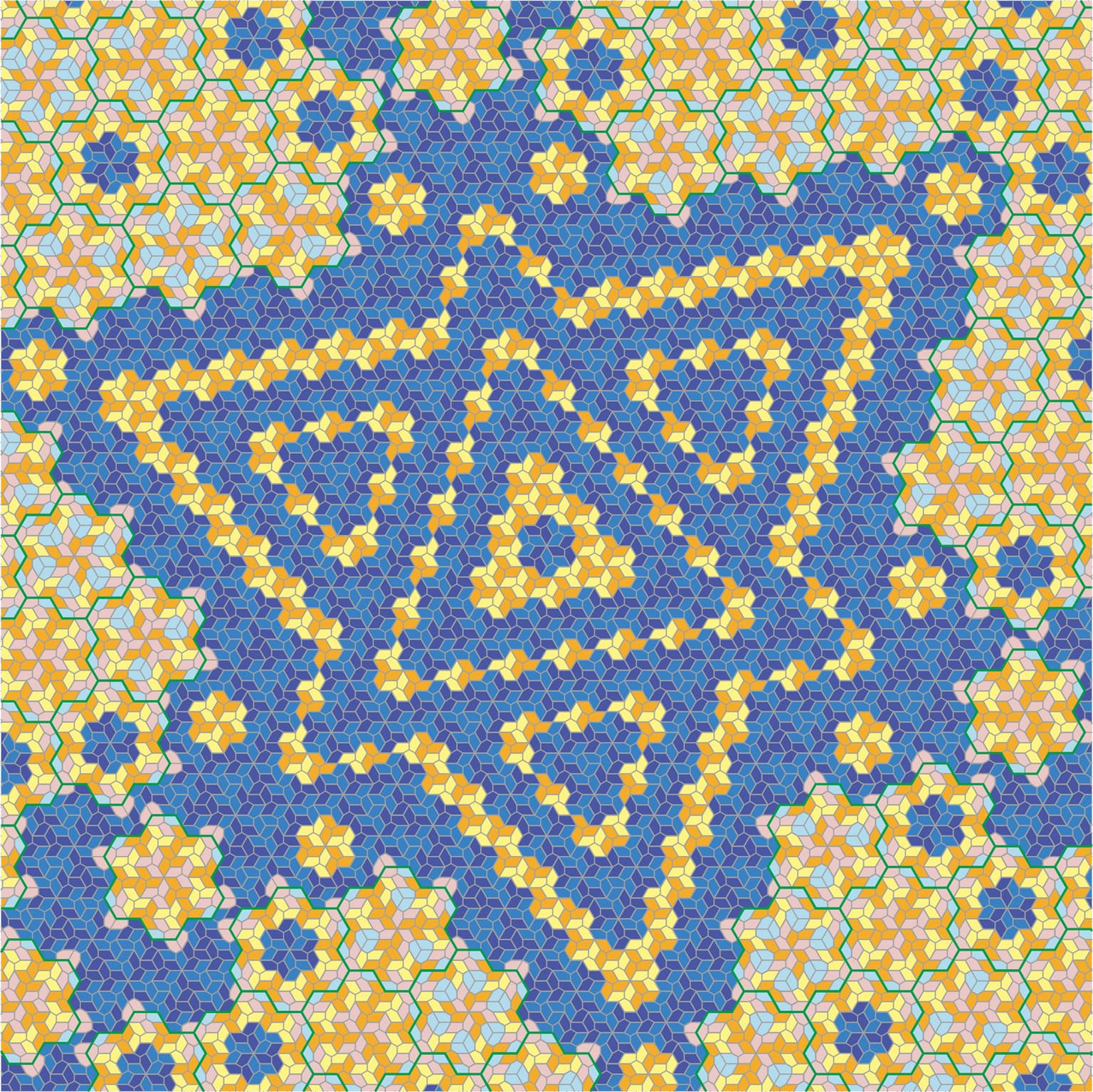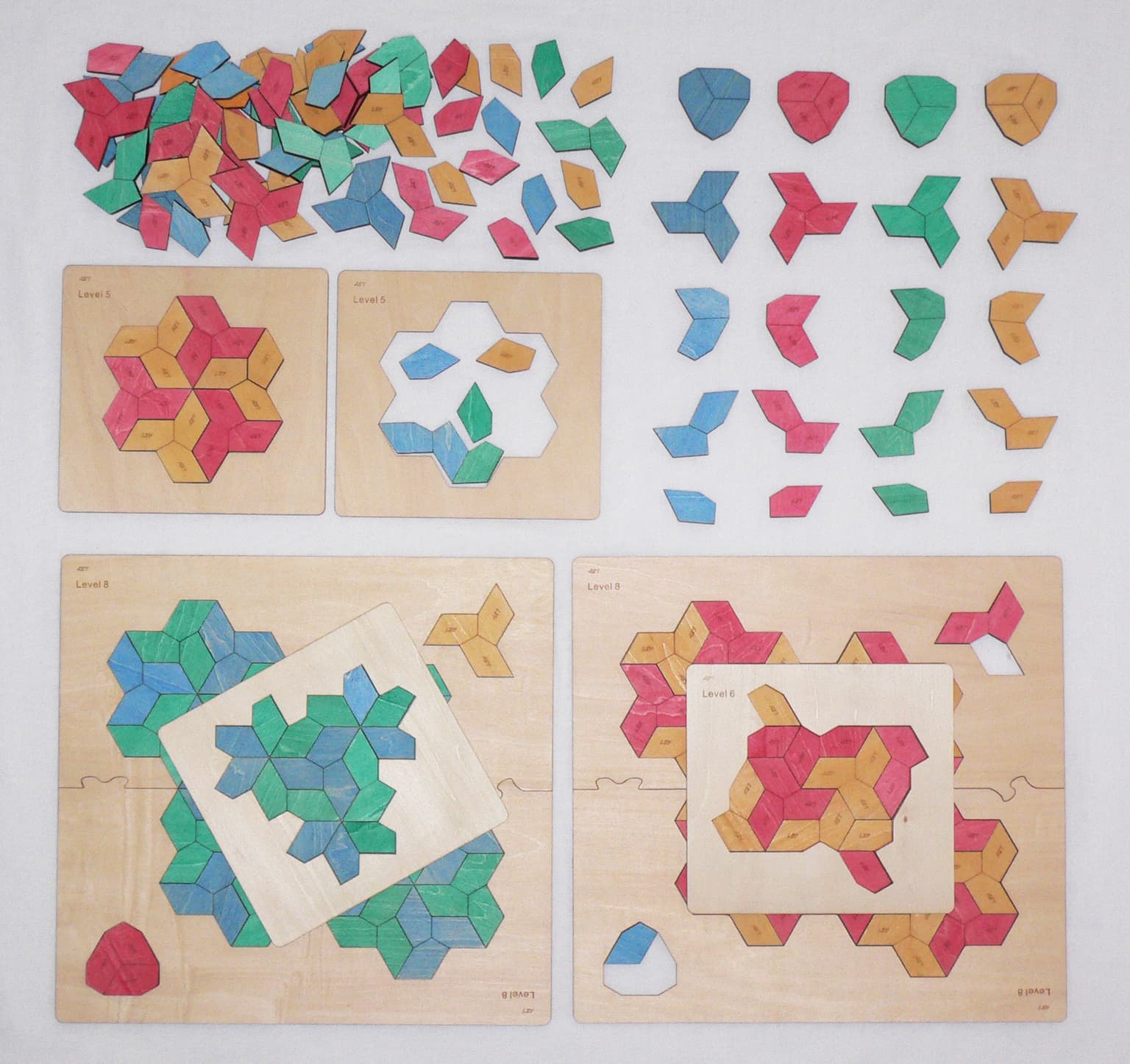Teruhisa Sugimoto
Artists
Teruhisa Sugimoto
The Interdisciplinary Institute of Science, Technology and Art, Japan Tessellation Design Association
Japan
Statement
For the longest time, tessellation (tiling), covering, and packing have fascinated me, especially tessellations of convex pentagons, with which I have had a relationship for roughly half of my life. While much of my time has been spent doing mathematical exploration, I have always carried with me a sense of artistic curiosity, and, in recent years, I have spent a lot of time on artistic activities.
Artworks

THP-S4
22 x 22 cm
Digital Print
2016
In 1995, Marjorie Rice discovered an interesting tessellation by using convex pentagons. The tessellation decorates the floor of lobby in the Mathematical Association of America headquarters. The convex pentagon which Rice used in the discovery belongs to both Type 1 and Type 5 of the known types for convex pentagonal tiles. I found novel properties of the convex pentagon. This artwork is a tessellation of that convex pentagon, using the properties I discovered. In this tessellation, according to a certain rule, the anterior pentagons have three kinds of warm colors, and the posterior pentagons have three kinds of cool colors. This convex pentagon tessellation is related to heptiamond tessellation.

Model (Puzzle) of Convex Pentagon Tessellation
60 x 60 x 2 cm
Wood
2016
An interesting convex pentagon tessellation, which Marjorie Rice discovered in 1995, is formed by a convex pentagonal tile belonging to Type 1 and Type 5. Hereafter, the tessellation discovered by Marjorie Rice is called a Rice1995-tiling. It seems at first that the Type 5 tessellation and the Rice1995 tessellation, each formed by using the same convex pentagonal tile, are different patterns. In fact, there exists a property such that the Type 5 tessellation, as well as the Rice1995 tessellation, can each be generated by either one of the 18 sided polygons (hexagonal flowers) formed by the convex pentagonal tile.
In this model, a player can experience the property for his or herself and make even more patterns.